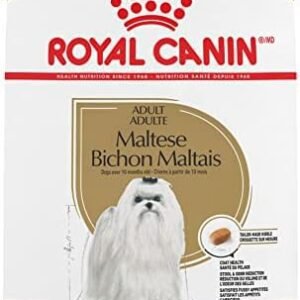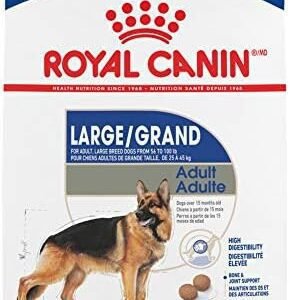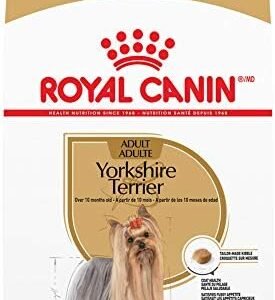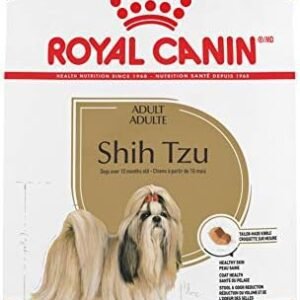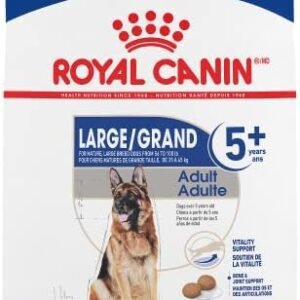Introduction
Are you a dog owner who’s ever wondered whether cranberries can be a tasty and safe treat for your furry companion? You’re not alone! Dogs are not just our pets; they’re beloved members of our families. And, like any family member, their well-being is of utmost importance. We all know how crucial it is to provide them with a balanced and nutritious diet. But what about human foods, such as cranberries? Can dogs eat cranberry? In this article, we will explore this question in depth and help you make informed decisions about your dog’s diet.

You might be surprised to learn that cranberries, with their vibrant red hue and distinctive tartness, have become popular not only among humans but also among pet owners. Cranberries are hailed for their potential health benefits in humans, especially for their role in promoting urinary tract health. However, when it comes to our furry friends, the landscape can be a bit more complex. So, let’s dive in and discover the facts about feeding cranberries to your dogs. We’ll explore the pros and cons, appropriate serving sizes, and what to watch out for if you decide to share these red gems with your canine companion.
Table of Contents
Can Dogs Eat Cranberry?
Cranberries, with their rich red color and tangy taste, are a popular fruit choice among humans. From cranberry sauce at Thanksgiving to cranberry juice for a refreshing beverage, these little red gems offer a unique flavor profile and are celebrated for their potential health benefits, particularly in supporting urinary tract health. But what about our four-legged friends? Can dogs eat cranberry? In this section, we’ll explore the safety and nutritional value of cranberries for dogs.
Cranberry Safety for Dogs
Cranberries themselves are not toxic or dangerous to dogs, but there are a few things to consider. First, it’s essential to feed your dog plain, unsweetened cranberries in moderation. Commercial cranberry products like cranberry sauce or sweetened cranberry juice are not suitable for dogs due to their high sugar content. Excessive sugar intake can lead to health issues, such as obesity and dental problems.
The specific taste of cranberry might not be to every dog’s liking. While some dogs enjoy the tartness of cranberries, others may not find them as appealing. Like humans, dogs have varying taste preferences, and individual reactions to cranberries can differ.
Nutritional Benefits of Cranberries for Dogs
Cranberries offer a range of nutritional benefits for dogs. They are rich in vitamins, minerals, and antioxidants that can support your dog’s overall health. Here’s a brief overview of the nutrients found in cranberries:
Vitamin C: Cranberries are a good source of vitamin C, which is an antioxidant that helps boost the immune system. It may aid in reducing the risk of certain diseases.
Fiber: Cranberries are high in dietary fiber, which can aid in digestive health and regularity. Fiber is also associated with better weight management.
Antioxidants: Cranberries are packed with antioxidants, such as flavonoids and polyphenols. These compounds can help combat free radicals and protect cells from damage.
- Proanthocyanidins (PACs): Cranberries contain PACs, which have been linked to preventing the adhesion of bacteria to the urinary tract lining. This is why cranberry products are commonly associated with urinary tract health.
Potential Drawbacks
While cranberries have various nutritional benefits for dogs, there are some potential drawbacks to consider:
Acidity: The natural acidity of cranberries may not agree with all dogs, especially those with sensitive stomachs. It can lead to gastrointestinal discomfort, including upset stomach or diarrhea in some cases.
Urinary Health: While cranberries are often linked to urinary tract health, it’s important to note that their effectiveness in preventing urinary tract infections in dogs is still debated among experts. While they may help, they are not a guaranteed solution.
Added Sugar: Many cranberry products intended for humans contain added sugars. These should be strictly avoided, as excess sugar can lead to obesity, diabetes, and other health problems in dogs.
- Allergies: In rare cases, dogs may exhibit allergic reactions to cranberries. If you notice any unusual symptoms, such as itching, hives, or vomiting after giving your dog cranberries, discontinue the fruit and consult your veterinarian.
Complementary Role in the Diet
Cranberries can be a nutritious and flavorful addition to your dog’s diet when fed in moderation. However, they should complement, not replace, your dog’s primary diet, which should consist of high-quality commercial dog food or a well-balanced homemade diet. If you choose to introduce cranberries to your dog’s diet, it’s essential to do so in a responsible and measured way. In the following sections, we’ll explore how much cranberry your dog can eat, any potential risks, and creative ways to incorporate this fruit into their meals.
How Much Cranberry Can a Dog Eat?
Feeding cranberries to your dog is all about moderation. While these ruby-red fruits offer some fantastic health benefits, too much of a good thing can have unintended consequences for your furry friend. In this section, we’ll delve into the details of how much cranberry your dog can safely consume and provide guidance on introducing this fruit into their diet.
1. Moderation is Key
When it comes to feeding cranberries to your dog, moderation is essential. This is a general rule for feeding any new food or treat to your canine companion. Treats, including fruits like cranberries, should make up no more than 10% of your dog’s daily calorie intake. Excessive treats can lead to weight gain and other health issues.
2. Start Small and Observe
If you’ve never fed your dog cranberries before, it’s a good idea to start with a small piece and observe their reaction. Not all dogs will immediately love the taste of cranberries, so it’s essential to introduce them gradually. Start by offering a small portion and see how your dog reacts. If they seem to enjoy it and don’t exhibit any adverse effects, you can continue to include cranberries in their diet.
3. Proper Preparation
While cranberries themselves are not toxic to dogs, it’s essential to prepare them correctly before offering them to your canine friend. The tartness and acidity of raw cranberries may not be palatable to all dogs and can lead to gastrointestinal discomfort in some cases.
To make cranberries more dog-friendly, consider cooking or boiling them. Cooking cranberries can help soften their texture and reduce the acidity. However, avoid adding sugar, sweeteners, or other flavorings during the preparation process, as these can be harmful to your dog.
4. Consider Your Dog’s Size and Breed
The size and breed of your dog can impact how much cranberry they can tolerate. Larger dogs may be able to consume more cranberries than smaller breeds without any issues. However, it’s still crucial to adhere to the 10% rule of treats relative to their daily calorie intake, regardless of their size.
Additionally, some smaller breeds may be more sensitive to dietary changes. If you have a small dog, consider introducing cranberries even more gradually to avoid any digestive discomfort.
5. Appropriate Serving Sizes
When determining how much cranberry to feed your dog, consider their weight. Here are some general guidelines for appropriate serving sizes based on your dog’s weight:
- Small dogs (up to 10 lbs): 1-2 cranberries as a treat.
- Small to medium dogs (10-30 lbs): 2-4 cranberries as a treat.
- Medium to large dogs (30-80 lbs): 4-8 cranberries as a treat.
- Large dogs (over 80 lbs): 8-12 cranberries as a treat.
Remember that these are general guidelines and should be adjusted based on your dog’s individual preferences and reactions. Always monitor your dog for any signs of digestive upset when introducing cranberries or any new treat. If you notice any adverse reactions, such as diarrhea, vomiting, or discomfort, discontinue the cranberries and consult your veterinarian.
Understanding the Risks of Feeding Cranberries to Dogs
Feeding your dog cranberries can be a rewarding experience, provided it’s done with care and consideration. Just as with any food, there are potential risks and adverse reactions to be aware of when incorporating cranberries into your dog’s diet. In this section, we’ll explore these risks and discuss how to ensure a safe and positive experience for your canine companion.
1. Possibility of Food Allergies
Food allergies are not uncommon in dogs, and while cranberries themselves are not highly allergenic, it’s still crucial to be cautious. Some dogs may be sensitive to certain components in cranberries, leading to allergic reactions. Allergies can manifest in various ways, including itching, skin rashes, ear infections, or digestive disturbances.
To minimize the risk of food allergies, introduce cranberries gradually into your dog’s diet. Start with a small piece and observe for any unusual reactions. If you notice any signs of allergy, discontinue feeding cranberries and consult your veterinarian.
2. Short-Term Signs of Food Intolerance
In addition to allergies, some dogs may experience food intolerance to cranberries. Food intolerance is different from allergies and typically involves digestive discomfort rather than immune system responses. Signs of food intolerance can include:
- Gastrointestinal Distress: This may include symptoms like diarrhea, vomiting, abdominal discomfort, or gas.
If your dog exhibits any of these short-term signs of food intolerance after consuming cranberries, it’s essential to stop feeding them and give their digestive system time to recover. Ensure your dog has access to clean water to stay hydrated and consult your veterinarian if the symptoms persist or worsen.
3. Potential Hazards from Components of Cranberries
While cranberries themselves are not toxic to dogs, there are certain components within them that can pose potential risks:
Cranberry Sauce and Sugar: Cranberry sauce, a popular dish during the holiday season, often contains high amounts of sugar. Feeding cranberry sauce to your dog is not recommended due to its high sugar content, which can lead to obesity, dental issues, and other health problems.
Dried Cranberries: Dried cranberries, like other dried fruits, are often high in sugar and may contain other additives. It’s best to avoid feeding your dog dried cranberries due to their sugar content.
Cranberry Products with Xylitol: Some cranberry products, such as sugar-free cranberry juice or snacks, may contain xylitol, an artificial sweetener toxic to dogs. Xylitol can lead to a rapid release of insulin in dogs, causing hypoglycemia (low blood sugar), seizures, and even liver failure. Never feed your dog products containing xylitol.
4. Signs and Symptoms of Adverse Reactions
Adverse reactions in dogs from consuming cranberries or related products may present in various ways. Be vigilant and watch out for the following signs and symptoms:
Gastrointestinal Issues: These may include diarrhea, vomiting, constipation, or excessive gas.
Allergic Reactions: Signs of allergies can range from itching, skin rashes, or hives to ear infections or respiratory problems.
Lethargy: A dog that suddenly becomes lethargic, tired, or unwilling to move may indicate an adverse reaction.
Change in Behavior: If you notice unusual behaviors, such as excessive panting, restlessness, or agitation after feeding cranberries, it could be a sign of an adverse reaction.
Swelling: Look for any signs of swelling, particularly around the face, lips, or tongue, which can be indicative of an allergic response.
If you observe any of these signs or symptoms after feeding cranberries or cranberry-related products to your dog, discontinue immediately and contact your veterinarian. Early intervention can prevent the development of severe complications and ensure your dog’s well-being.
Making Cranberries Enjoyable for Your Dog
Feeding cranberries to your dog can be a delightful experience, provided you take the necessary precautions and get creative with how you serve this fruit. In this section, we’ll explore various methods for feeding cranberries to your dog, making them more enjoyable, and even sharing some tasty recipes for homemade cranberry treats.
1. Feeding Cranberries to Your Dog
Feeding your dog cranberries in their raw, natural form is the simplest and most wholesome way. Cranberries can be served as a standalone treat or alongside their regular meals. Here are some ideas for feeding cranberries to your furry friend:
Whole Cranberries: Start by offering a small piece of cranberry to your dog and observe their reaction. If they enjoy the taste and tolerate it well, you can continue giving them cranberries as an occasional treat.
Chopped or Sliced: You can also chop or slice cranberries into smaller pieces, making it easier for your dog to eat. Smaller portions can be mixed into your dog’s regular food to add a touch of flavor and nutrition.
Frozen Cranberries: Some dogs might enjoy the crunchiness of frozen cranberries as a refreshing treat, especially on a hot day. Simply wash and freeze the cranberries, and serve them cold.
- Cranberry Sauce: If you’re using unsweetened cranberry sauce (without added sugar), you can occasionally drizzle a small amount over your dog’s regular meals to enhance their flavor.
2. Homemade Cranberry Treats and Snacks
Getting creative in the kitchen is a wonderful way to make cranberries more appealing to your dog. Homemade treats and snacks allow you to control the ingredients and avoid unnecessary additives. Here are some ideas for using cranberries in dog-friendly recipes:
Cranberry Dog Biscuits: You can make homemade dog biscuits by adding dried cranberries to the dough. Ensure the cranberries are unsweetened and free of any harmful additives. Here’s a simple recipe to get you started:
Ingredients:
- 2 cups whole wheat flour
- 1/2 cup unsweetened dried cranberries
- 1/4 cup water
- 1 egg
Instructions:
- Preheat your oven to 350°F (175°C).
- Mix the flour and dried cranberries in a large bowl.
- In a separate bowl, beat the egg and add water.
- Combine the wet and dry ingredients to form a dough.
- Roll out the dough and cut out biscuit shapes.
- Place the biscuits on a baking sheet and bake for about 25 minutes or until they’re firm and golden.
- Let them cool completely before serving.
Cranberry-Infused Water: If your dog is not a fan of plain water, you can create a cranberry-infused water to entice them to drink more. Mix a few cranberries in a bowl of water, allowing the flavors to infuse. Replace the cranberries as needed to keep the water flavorful.
3. Enhancing Your Dog’s Dining Experience
Incorporating cranberries into your dog’s diet can be a part of enhancing their overall dining experience. Here are some creative techniques to make mealtimes more enjoyable:
Mix with Regular Food: If your dog enjoys the taste of cranberries, you can mix a small amount into their regular food. This adds a burst of flavor and nutrition to their meals.
Create Variety: Dogs, like humans, can get bored with a monotonous diet. Introducing cranberries as an occasional treat can offer variety and stimulate their taste buds.
Use as Training Rewards: Cranberries can also be used as training rewards. Smaller portions or chopped cranberries can be a tasty incentive during training sessions.
- Monitor and Adjust: Pay attention to how your dog reacts to cranberries. Some dogs may have sensitive stomachs, and while cranberries are generally safe, it’s crucial to monitor their tolerance and adjust accordingly.
4. Tasty Cranberry Recipes for Dogs
Here are a couple of delicious and simple recipes that incorporate cranberries into dog-friendly treats:
Cranberry Oatmeal Dog Cookies:
Ingredients:
- 1 cup rolled oats
- 1/2 cup unsweetened dried cranberries
- 1 ripe banana, mashed
- 1/4 cup unsweetened applesauce
Instructions:
- Preheat your oven to 350°F (175°C).
- Mix the rolled oats and dried cranberries in a bowl.
- In a separate bowl, combine the mashed banana and applesauce.
- Combine the wet and dry ingredients.
- Form small cookie shapes and place them on a baking sheet.
- Bake for approximately 15-20 minutes or until they’re lightly browned.
- Allow the cookies to cool before serving.
Cranberry Frozen Pops:
Ingredients:
- A handful of fresh cranberries
- Plain yogurt
Instructions:
- Wash the cranberries and blend them until smooth.
- Mix the cranberry puree with plain yogurt.
- Pour the mixture into ice cube trays.
- Freeze the trays and serve the cranberry pops as a cool and tasty treat on warm days.
Remember that while cranberries can be a delightful addition to your dog’s diet, they should be given in moderation. Every dog’s preferences and sensitivities are unique, so pay attention to their reactions and adjust accordingly. Enjoy sharing cranberries with your furry friend in a safe and creative way!
Frequently Asked Questions About Dogs and Cranberries
As we dive deeper into the world of dogs and cranberries, it’s common to have questions and concerns about this popular fruit and its impact on our furry friends. In this section, we will address some of the most frequently asked questions regarding dogs and cranberries to provide clarity and ensure your pet’s safety and enjoyment.
1. Can dogs eat cranberries?
Yes, dogs can safely eat cranberries in moderate amounts. These tart and vibrant fruits offer some nutritional benefits and can be a tasty treat for many dogs. However, it’s essential to follow certain guidelines to ensure your pet’s well-being.
2. Are there nutritional benefits to feeding cranberries to dogs?
Cranberries are rich in antioxidants, vitamin C, fiber, and various phytonutrients that can be beneficial for dogs. They can support the urinary tract health of your pet and provide essential vitamins and minerals. However, keep in mind that cranberries should complement their regular diet, not replace it.
3. How much cranberry can a dog eat?
Moderation is key when feeding cranberries to dogs. Treats, including cranberries, should make up no more than 10% of your dog’s daily calorie intake. Begin with a small piece of cranberry and observe your dog’s reaction before providing more. Serving sizes should also vary based on your dog’s weight.
4. Can dogs eat cranberry sauce or canned cranberry products?
Cranberry sauce and many canned cranberry products typically contain added sugars and other ingredients that may not be suitable for dogs. These added ingredients can be harmful to your pet’s health. It’s best to stick with fresh or unsweetened dried cranberries.
5. What are the risks of feeding cranberries to dogs?
While cranberries are generally safe, there are some potential risks to be aware of:
Allergies: Some dogs might be allergic to cranberries. If it’s your pet’s first time trying cranberries, watch for signs of an allergic reaction, such as itching, hives, or digestive issues.
Gastrointestinal Distress: Cranberries’ high fiber content can cause digestive discomfort in some dogs, leading to diarrhea or upset stomach.
Potential Hazards: Cranberries contain oxalates, which in large amounts, can lead to the formation of kidney stones. Therefore, excessive consumption of cranberries is not advisable.
6. What are the signs of an allergic reaction in dogs to cranberries?
Signs of an allergic reaction may include itching, redness, hives, swelling, vomiting, diarrhea, or difficulty breathing. If you notice any of these symptoms after your dog consumes cranberries, consult your veterinarian immediately.
7. Can cranberries be harmful to dogs with certain health conditions?
Yes, cranberries may not be suitable for dogs with specific health conditions. If your dog has a history of kidney stones or oxalate crystals, consult with your veterinarian before introducing cranberries into their diet.
8. Can cranberries be given to puppies?
While cranberries can be safe for puppies, it’s essential to offer them in moderation. Puppies have sensitive digestive systems, so start with a small amount to assess their tolerance.
9. Are there any creative ways to feed cranberries to dogs?
Absolutely! You can feed cranberries to your dog in various ways. You can offer them whole, chop or slice them into smaller pieces, or even freeze them for a refreshing treat. Additionally, consider incorporating cranberries into homemade dog treats and snacks. The possibilities are endless.
10. What other fruits are safe for dogs to eat?
Cranberries are just one of many fruits that dogs can enjoy in moderation. Some other safe options include:
- Blueberries
- Apples (without seeds)
- Watermelon (seedless)
- Bananas (in small portions)
- Pears (remove seeds and core)
- Strawberries
Remember that when introducing new foods into your dog’s diet, it’s crucial to monitor their reactions and consult with your veterinarian if you have any specific concerns.
Cranberries can be a delightful and nutritious addition to your dog’s diet when provided in moderation and prepared with their safety and enjoyment in mind. By following these guidelines and being attentive to your pet’s reactions, you can ensure that your furry friend receives all the benefits that cranberries have to offer.
In Conclusion: Cranberries Can Be a Tasty and Safe Treat for Your Dog
In this comprehensive exploration of whether dogs can eat cranberries, we’ve uncovered the many aspects surrounding this delightful fruit and its potential impact on our furry companions. The verdict? Yes, dogs can indeed enjoy cranberries in moderation, but it’s crucial to follow certain guidelines to ensure their safety and satisfaction.
Cranberries offer valuable nutritional benefits, including antioxidants, vitamin C, and fiber, which can be advantageous for your dog’s well-being. However, it’s important to remember that cranberries should complement, not replace, your dog’s primary diet.
We’ve discussed appropriate serving sizes, potential risks, and the signs of adverse reactions to be vigilant about. It’s essential to exercise caution and monitor your dog when introducing cranberries into their diet, especially if it’s their first time trying this fruit.
If your canine companion has a history of allergies, kidney stones, or other health conditions, consulting your veterinarian before adding cranberries to their diet is highly recommended.
And if you’re looking for other safe and healthy treats for your dog, consider options like blueberries, apples (seedless), watermelon (seedless), bananas (in small portions), pears (seeds and core removed), and strawberries.
We hope this article has provided valuable insights into the world of dogs and cranberries. If you have any questions or would like to share your experiences, feel free to drop a comment below or engage with us on our social media platforms. Your dog’s well-being and happiness are of utmost importance, and making informed choices about their diet is a step in the right direction.




















